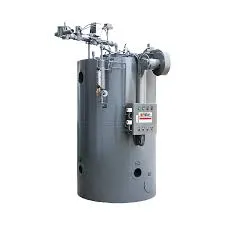ਅਕਤੂਃ . 13, 2024 22:16 Back to list
3 way heat exchanger
Understanding 3-Way Heat Exchangers
Heat exchangers play a crucial role in various industrial processes, allowing for efficient thermal energy transfer between two or more fluids without mixing them. Among the various types of heat exchangers, the 3-way heat exchanger stands out for its unique ability to manage the flow of multiple fluids simultaneously. This article delves into the design, function, and applications of 3-way heat exchangers.
Design and Operation
A 3-way heat exchanger typically features three inlet/outlet ports, enabling it to handle three fluid streams—commonly referred to as the hot fluid, cold fluid, and a third fluid that may be a blend or a secondary heating/cooling medium. The design allows for enhanced heat transfer efficiency and flexibility in thermal management.
The operation of a 3-way heat exchanger hinges on the principle of counterflow heat exchange, where the hot fluid transfers heat to the cold fluid in a manner that maximizes the temperature difference between the two fluids. This operation is optimized through various designs, such as tube-and-shell or plate configurations, which increase the surface area for heat transfer and reduce resistance to fluid flow.
Applications
3-way heat exchangers are particularly beneficial in HVAC systems, power plants, and chemical processing industries. In HVAC systems, they are used for heating and cooling applications by recovering waste heat from exhaust gases and transferring it to incoming air or water. This not only improves energy efficiency but also reduces operational costs.
3 way heat exchanger

In power plants, 3-way heat exchangers facilitate the transfer of thermal energy from steam or hot water to other operational fluids in the energy cycle, enhancing the overall efficiency of electricity generation. Similarly, in chemical processing, these heat exchangers manage temperature-sensitive reactions by maintaining precise thermal conditions, thus ensuring product quality and safety.
Benefits
The benefits of using a 3-way heat exchanger are numerous. Firstly, they provide energy savings by recovering waste heat and utilizing it in other processes, contributing to a more sustainable approach to energy use. Secondly, their capacity to handle multiple fluid streams allows for greater flexibility in system design, accommodating varying operational requirements. Additionally, they help in minimizing the thermal response time, leading to better control over process temperatures and improved operational reliability.
Challenges
Despite their advantages, 3-way heat exchangers are not without challenges. The complexity of their design can lead to higher initial costs compared to simpler heat exchangers. Moreover, the need for precise flow control and balance is critical, as improper distribution can reduce the efficiency of heat exchange and lead to uneven heating or cooling.
Conclusion
In summary, 3-way heat exchangers are an essential component in many industrial applications, providing efficient heat transfer while managing multiple fluid streams. As industries continue to prioritize energy efficiency and sustainable practices, the role of these advanced heat exchangers will likely become even more prominent. By understanding their design, operation, and applications, engineers and operators can leverage the benefits of 3-way heat exchangers to enhance performance and reduce energy consumption in various processes.
-
Durable Centrifugally Cast Iron Water Main Pipe
NewsAug.11,2025
-
Centrifugally Cast Iron Water Main Pipes for Reliability
NewsAug.10,2025
-
High-Quality Centrifugally Cast Iron Water Main Pipes
NewsAug.09,2025
-
Durable Cast Iron Water Main Pipe & Drainage Solutions
NewsAug.08,2025
-
Buy Cast Iron Pipe: Premium Ductile Iron & Drain Solutions
NewsAug.07,2025
-
Durable Cast Iron Water Main Pipe | Buy Ductile Pipe
NewsAug.06,2025


